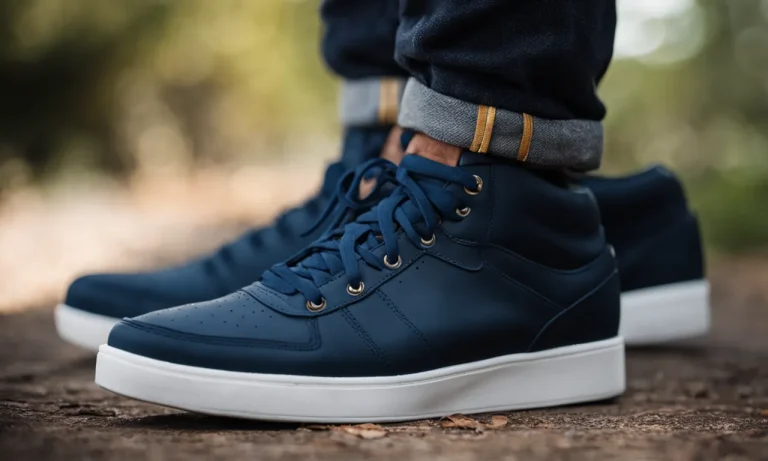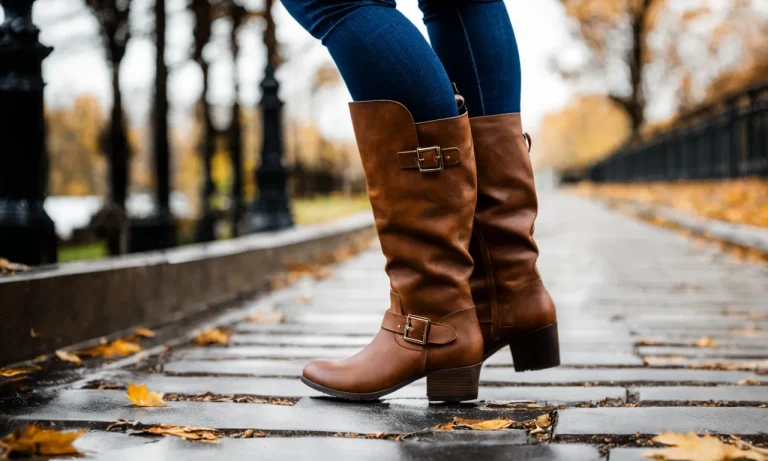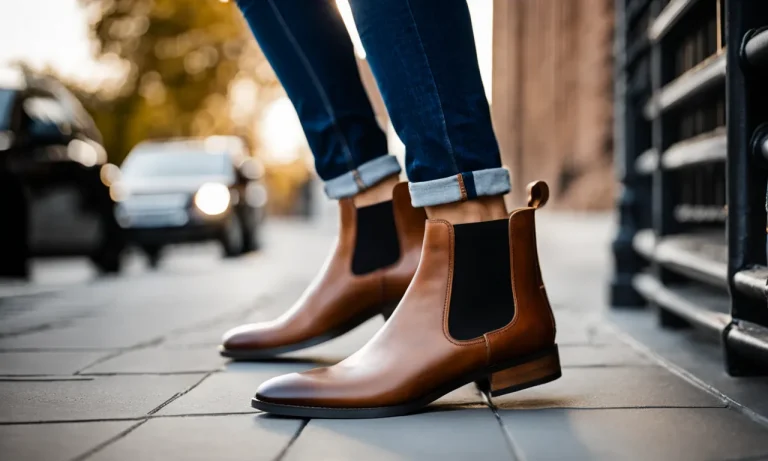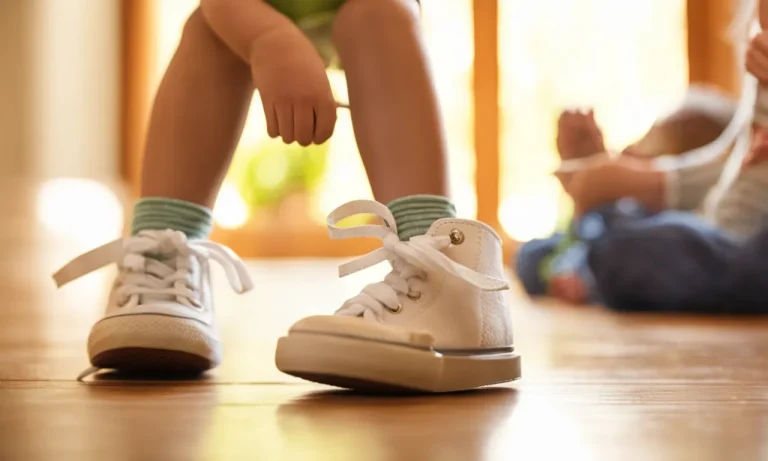With winter just around the corner, many people are starting to pull their boots out of storage. But you might be wondering, how does boot size compare to your normal shoe size? Finding a properly fitted boot is key to keeping your feet comfortable and warm all winter long.
If you’re short on time, here’s a quick answer to your question: Generally, you should buy boots 1/2 to 1 full size larger than your normal shoe size. This allows room for thick socks and foot swelling. But the exact sizing can vary depending on the brand and style of boot.
In this comprehensive guide, we’ll cover everything you need to know about converting your shoe size to boot size. We’ll look at how to find your accurate shoe size, factors that affect boot sizing, size charts for popular brands, how to measure your feet at home, and tips for trying on boots to get the perfect fit.
Determine Your Precise Shoe Size
Consider your foot measurements
When it comes to finding the perfect fit, it all starts with knowing your foot measurements. It’s not as simple as just knowing your shoe size. To determine your precise shoe size, you should measure the length and width of your feet using a measuring tape or a ruler.
Place your foot on a piece of paper and trace the outline. Measure the length from the tip of your longest toe to the back of your heel. Then, measure the width at the widest part of your foot. These measurements will give you a better idea of which shoe size will provide the best fit for you.
Account for foot swelling later in the day
Keep in mind that our feet tend to swell throughout the day, especially if we are on our feet for long periods. To get the most accurate shoe size, it is recommended to measure your feet towards the end of the day when they are at their largest.
This will ensure that your shoes won’t feel tight or uncomfortable when your feet inevitably swell.
It’s also worth noting that certain materials, like leather, can stretch over time and accommodate for slight variations in foot size. However, it’s always better to start with a shoe size that allows for some extra room rather than one that is too tight.
Your right and left feet may not be the same size
Believe it or not, most people have one foot slightly larger than the other. Therefore, it’s essential to measure both feet and take the larger one into consideration when determining your shoe size. Wearing shoes that are too small for your larger foot can lead to discomfort and even foot problems over time.
If you find that there is a significant difference in size between your feet, it might be worth considering buying shoes that are specifically designed for different foot sizes. Some brands offer options where you can buy a pair of shoes with different-sized left and right shoes.
Remember, finding the right shoe size is crucial for your comfort and overall foot health. Taking the time to measure your feet accurately and considering factors like foot swelling and differences in foot size will help you find the perfect fit.
Factors That Affect Boot Sizing
Type of boot (work vs. fashion)
One of the key factors that affect boot sizing is the type of boot you are looking for. Work boots are typically designed to be more durable and provide ample protection, which can result in a slightly different fit compared to fashion boots.
Work boots often have a roomier toe box and a higher arch support to accommodate the needs of individuals who are on their feet for long periods of time. On the other hand, fashion boots tend to prioritize style over functionality and may have a narrower fit.
Intended use (casual vs. hiking)
Another important factor to consider when determining your boot size is the intended use. If you are looking for casual boots that you’ll wear for everyday activities, you may want to consider sizing up to allow for thicker socks or extra comfort.
However, if you are purchasing hiking boots, it is crucial to get the right fit to prevent blisters and ensure proper ankle support. Hiking boots often have a more snug fit to provide stability on uneven terrain.
Thickness of sock
The thickness of the socks you plan to wear with your boots can also impact the sizing. If you tend to wear thicker socks during colder months, it’s a good idea to try on boots with those socks to ensure a comfortable fit.
Keep in mind that wearing thicker socks can make your boots feel tighter, so you may need to size up to compensate for the added bulk.
Brand sizing varies
It’s important to note that sizing can vary between different brands. A size 8 in one brand may fit differently than a size 8 in another brand. It’s always best to refer to the specific brand’s size chart and read customer reviews to get an idea of how their boots fit.
Additionally, some brands may offer different width options, so if you have wider or narrower feet, it’s worth exploring brands that cater to your specific needs.
Material affects stretch
The material of the boot can also affect how much it stretches over time. Leather boots, for example, tend to stretch and mold to the shape of your feet with wear. On the other hand, synthetic materials may not stretch as much.
It’s important to keep this in mind when trying on boots and consider how much give you may need for a comfortable fit.
Account for toe room needed
Lastly, when trying on boots, it’s essential to account for the amount of toe room you need. Your toes should have enough space to wiggle comfortably, without feeling cramped or restricted. The rule of thumb is to have about a thumb’s width of space between the tip of your longest toe and the front of the boot.
This extra room will help prevent discomfort and allow for proper blood circulation.
Size Charts for Major Boot Brands
Timberland
When it comes to Timberland boots, finding the right size is crucial for a comfortable fit. Timberland provides a comprehensive size chart on their official website, which includes measurements for both men and women.
The chart takes into account the length and width of your foot, as well as your shoe size. By referring to this chart, you can determine the perfect size for your Timberland boots and ensure a snug fit.
For more information, you can visit Timberland’s official size chart.
Dr. Martens
Dr. Martens boots are known for their iconic style and durability. To find the right size for your Dr. Martens boots, you can refer to their size chart, which is available on their website. The chart provides measurements for both men and women, including foot length and width.
By using this chart, you can easily find the perfect size and make sure your Dr. Martens boots fit you like a glove.
For more information, you can visit Dr. Martens’ official size chart.
Blundstone
Blundstone boots are known for their comfort and durability. To find the right size for your Blundstone boots, you can refer to their size chart, which is available on their official website. The chart provides measurements for both men and women, including foot length and width.
By using this chart, you can ensure a perfect fit for your Blundstone boots and enjoy maximum comfort.
For more information, you can visit Blundstone’s official size chart.
UGG
UGG boots are popular for their cozy sheepskin lining and stylish designs. To determine the right size for your UGG boots, you can refer to their size chart, which is available on their official website. The chart includes measurements for both men and women, including foot length and width.
By using this chart, you can find the perfect size for your UGG boots and ensure a comfortable fit.
For more information, you can visit UGG’s official size chart.
Sorel
Sorel boots are known for their ruggedness and versatility. To find the right size for your Sorel boots, you can refer to their size chart, which is available on their official website. The chart provides measurements for both men and women, including foot length and width.
By using this chart, you can ensure a perfect fit for your Sorel boots and enjoy both style and comfort.
For more information, you can visit Sorel’s official size chart.
Measuring Feet at Home
Getting the right shoe size is crucial for comfort and preventing foot problems. While it’s always recommended to visit a professional shoe fitter, measuring your feet at home can be a convenient alternative. Here are some methods you can try:
Trace your foot on paper
One simple way to measure your foot size is by tracing it on a piece of paper. Place your foot on the paper and use a pen or pencil to trace around it. Make sure to keep the pen or pencil perpendicular to the paper to get an accurate measurement.
Once you have traced your foot, use a ruler to measure the length from the heel to the longest toe and also measure the width at the widest part of your foot. This will give you a general idea of your foot size.
Use a Brannock device
If you’re looking for a more precise measurement, consider investing in a Brannock device. This tool is commonly used in shoe stores to measure both the length and width of your foot. It consists of a metal footplate with adjustable sliders and a measuring scale.
Simply place your foot on the device and adjust the sliders until they snugly fit against your foot. The measurements displayed on the scale will give you an accurate representation of your foot size.
Measure foot length and width
If you don’t have a Brannock device, you can still measure your foot length and width using a ruler or tape measure. To measure the length, place the ruler or tape measure against a wall and stand with your heel touching the wall. Then, measure from the wall to the tip of your longest toe.
To measure the width, wrap the tape measure around the widest part of your foot. These measurements can help you determine your shoe size when shopping online or when a Brannock device is not available.
Remember, measuring your feet at home is a good starting point, but it’s always best to try on shoes before making a purchase, especially if you have specific foot conditions or concerns. If you’re unsure about your foot size or need further assistance, it’s recommended to consult with a professional shoe fitter or podiatrist.
Trying On Boots for the Perfect Fit
Shop late in the day when feet are most swollen
When it comes to finding the right fit for boots, it’s important to consider the size of your feet at their largest. Feet tend to swell throughout the day, especially after a day of walking or being on your feet.
Therefore, it’s recommended to shop for boots later in the day when your feet are at their most swollen. This will ensure that you choose a boot size that accommodates any potential swelling and provides maximum comfort throughout the day.
Wear socks you plan to wear with boots
When trying on boots, it’s crucial to wear the same type of socks that you plan to wear with them. Different socks can significantly affect the fit of the boot. For example, if you plan on wearing thick winter socks with your boots, it’s important to try them on with those socks to ensure a proper fit.
By doing so, you can avoid purchasing boots that may feel too tight or uncomfortable with your preferred socks.
Walk around the store with boots on
Don’t just stand in front of the mirror when trying on boots – take them for a test walk around the store! Walking will give you a better sense of how the boots feel on your feet and whether they provide the necessary support and comfort. Pay attention to any areas that may rub or feel uncomfortable.
If the boots don’t feel right while walking, it’s best to try a different size or style that better suits your feet.
Ensure no heel slippage
One common issue when it comes to boot fit is heel slippage. Your heels should fit snugly in the boots without any excessive movement. To check for heel slippage, walk around in the boots and pay attention to how your heels feel.
If there is noticeable slippage, it may be an indication that the boots are too big. Consider trying a smaller size or adjusting the lacing or straps to achieve a more secure fit.
Toes should have wiggle room
When trying on boots, it’s important to ensure that your toes have enough space to wiggle comfortably. Your toes should not feel cramped or pressed against the front of the boot. There should be enough room for them to move freely without any discomfort.
This will help prevent issues such as blisters or toe numbness during extended wear.
Remember, finding the perfect fit for boots is essential for comfort and overall foot health. By following these tips and paying attention to how the boots feel on your feet, you can ensure a great fit that will keep you comfortable and stylish.
Conclusion
Finding boots that properly fit your feet is the key to staying comfortable all winter. Now that you know how to convert your shoe size to boot size, consider the many factors that affect sizing, and follow tips for at-home measurement and in-store trying on, you can confidently shop for boots this season.
Focus on your precise foot measurements, sock thickness, intended use, brand sizing charts, and a proper in-store fitting. With this knowledge in hand, you’ll be ready to buy winter boots that will keep your feet warm, supported, and happy out on the slopes or sidewalks this winter.






